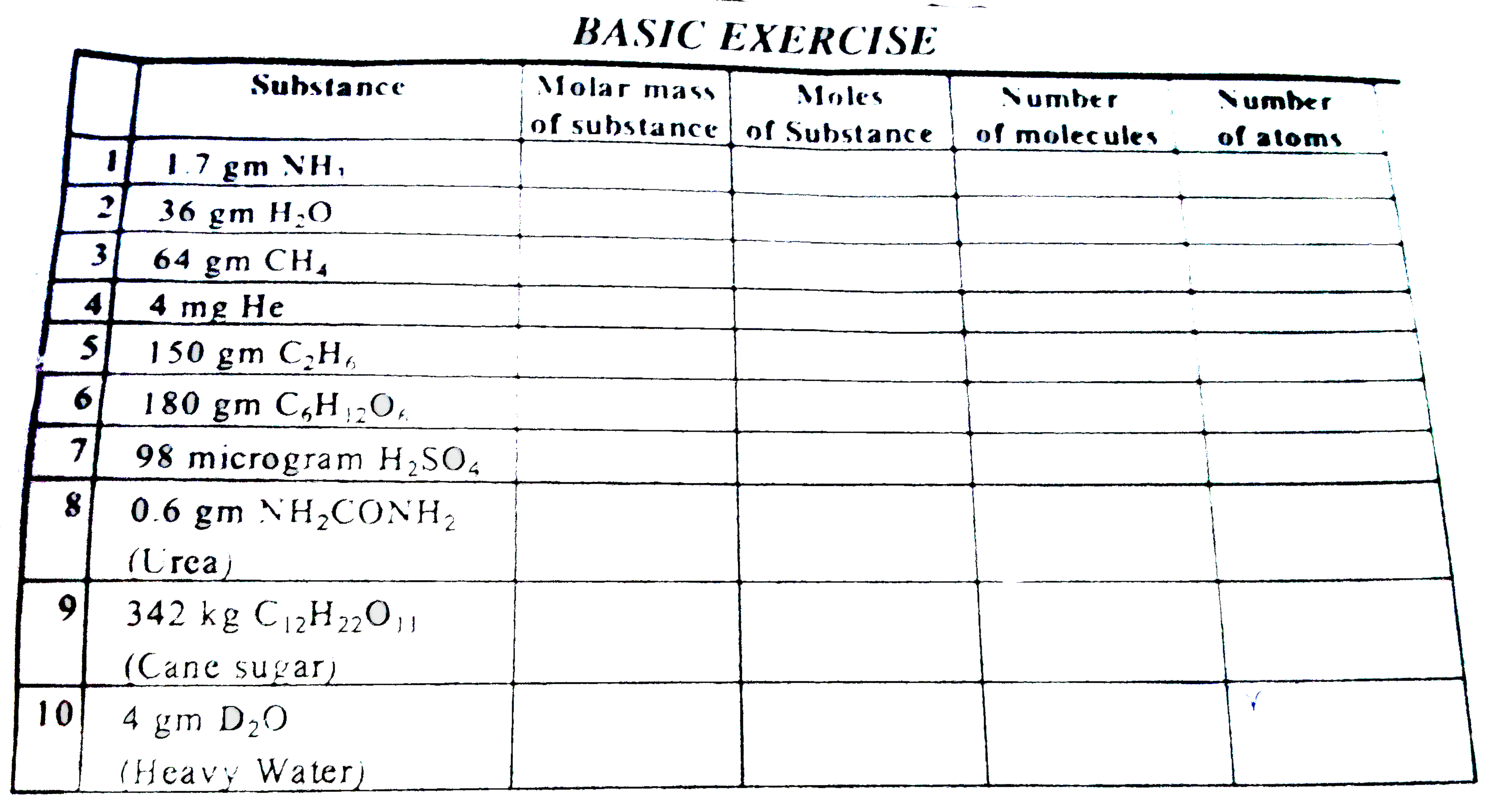
A→2B+C
3B→2D
Find moles of D produced if initially 3 moles of A are taken.
Text Solution
The correct Answer is:(##ALNNCCHMMCE01028_A01##)
4
|
Topper's Solved these Questions
- MOLE CONCEPTBOOK - ALLENCHAPTER - MOLE CONCEPTEXERCISE - S-I (Problems Related with Different Types of Atomic Masses & Basic Concept of Mole)
53 Videos
- MOLE CONCEPTBOOK - ALLENCHAPTER - MOLE CONCEPTEXERCISE - S-II
18 Videos
- MOLE CONCEPTBOOK - ALLENCHAPTER - MOLE CONCEPTEXERCISE - Some Solved Examples
9 Videos
- METALLURGYBOOK - ALLENCHAPTER - METALLURGYEXERCISE - EXERCISE-05 [B]
26 Videos
- p-Block Element BOOK - ALLENCHAPTER - p-Block Element EXERCISE - All Questions
20 Videos
Similar Questions
Knowledge Check
Consider the following balanced chemical reaction
3A+4B+5C→2D
If 7 moles of A, 9 moles of B and 8 moles of C are given initially, the mole fraction of D present after completion of reaction isA0.24B0.65C0.4D0.08In the reaction 4A+2B+3C→A4B2C3, the number of moles of product formed will be if starting from 2 moles of A, 1.2 moles of B and 1.44 moles of C
A0.48B0.3C0.6D1Statement-1: 2A+3B→C
4/3 moles of 'C' are always produced when 3 moles of 'A' & 4 moles of 'B' are added.
Statement-2: 'B'is the limiting reactant for the given data.AStatement-1 is true, statement-2 is true and statement-2 is correct explanation for statement-1.BStatement-1 is true, statement-2 is true and statement-2 is NOT the correct explanation for statement-1CStatement-1 is false, statement -2 is true.DStatement -1 is true, statement-2 is false.
Statement-1: 2A+3B→C
4/3 moles of 'C' are always produced when 3 moles of 'A' & 4 moles of 'B' are added.
Statement-2: 'B'is the limiting reactant for the given data.
View Solution
2NH3→N2+3H2
If at the reaction, 18 mole of H2 is produced then find moles of NH3 initially taken
View Solution2NH3→N2+3H2
If at the reaction, 18 mole of H2 is produced then find moles of
NH3 initially taken
View SolutionFor the reaction
2A+3B+5C→3D
Initially if 2 mole of A, 4 mole of B and 6 mole of C is taken, With 25% yield, moles of D which can be produced are _____________.
View SolutionIn the reaction A+B⇔C+D, 4 moles of A
react with 4 moles of B and form 2 moles each of C and D. The value of Ke for the reaction is
View Solution

